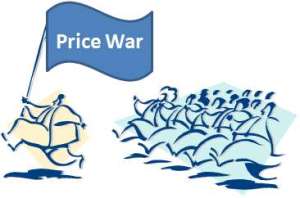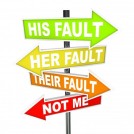Saving is vitally important, but not at the expense of health, wellness or safety. Is your health and well-being not worth a cold million?
 Economy does not lie in sparing money, but in spending it wisely.
Economy does not lie in sparing money, but in spending it wisely. 
Thomas Huxley
Below are 5 fundamental products/services that one should not be frugal on. Research, and spend wisely on below while balancing on “social expenditures” i.e. booze, restaurants, or ‘want vs need’ shopping, for example.
1. Car Tires – Did you know that car tires have a shelf life of 4 years? I’m not sure why people would do little research or not spend on something that is the interface between the car and the road. A car is a 2+ ton vehicle moving at speeds in excess of 100km/hr (60 mi/hr). Be safe and get good tires for your family.
2. Fresh Food – We are what we eat. Ever put crappy gas in the car? Food is our fuel. Invest in learning how to cook fresh food and try to avoid processed foods (we are all too busy to read the long list of in-pronounceable ingredients in processed foods!). I’m not saying buy Organic all the time but buy Fresh and make fresh sauces (avoid canned stuff with shelf life of 6 month-1 year, full of preservatives). I’ve spent 10 years in the food industry and seen some nasty preservatives devised in laboratories but found in our grocery shelf.
3. Gym/Wellness – Investing in you is the best investment. Stress is a killer – yoga, walking, gym, etc are great ways to stay fit. If you can’t look after yourself, you can’t look after someone else. There’s no argument from the pundits on this one.
4. Mattress – We spend 33% of our lives or 8 hours/day on a bed. A good night sleep is vital to health and mental acumen. You can get good quality mattresses for $800-1000. Don’t go cheap here…I’ve bought mattresses for a major retailer and understand the value – pocket coils are great and so are some foam types.
5. Shoes – Again, we spend hours on end on our feet. Shoes are the interface between your lovely toes and the earth. Invest in good shoes and your happy feet will love you. I’m not saying develop a shoe fetish… but instead of having 20 pairs of shoes, think sensibly and get quality.
Don’t spend beyond your means, but do mean to spend wisely on core products to keep you safe and healthy.




 But arguably given lip-service and a banal expression synonymous with company-speak terms like synergize, teamwork, etc.
But arguably given lip-service and a banal expression synonymous with company-speak terms like synergize, teamwork, etc.  , it is now just lip service. But I argue, Networking is an art. It deserves one’s committment and one’s dedicated effort to that art.
, it is now just lip service. But I argue, Networking is an art. It deserves one’s committment and one’s dedicated effort to that art.
 departments
departments 


